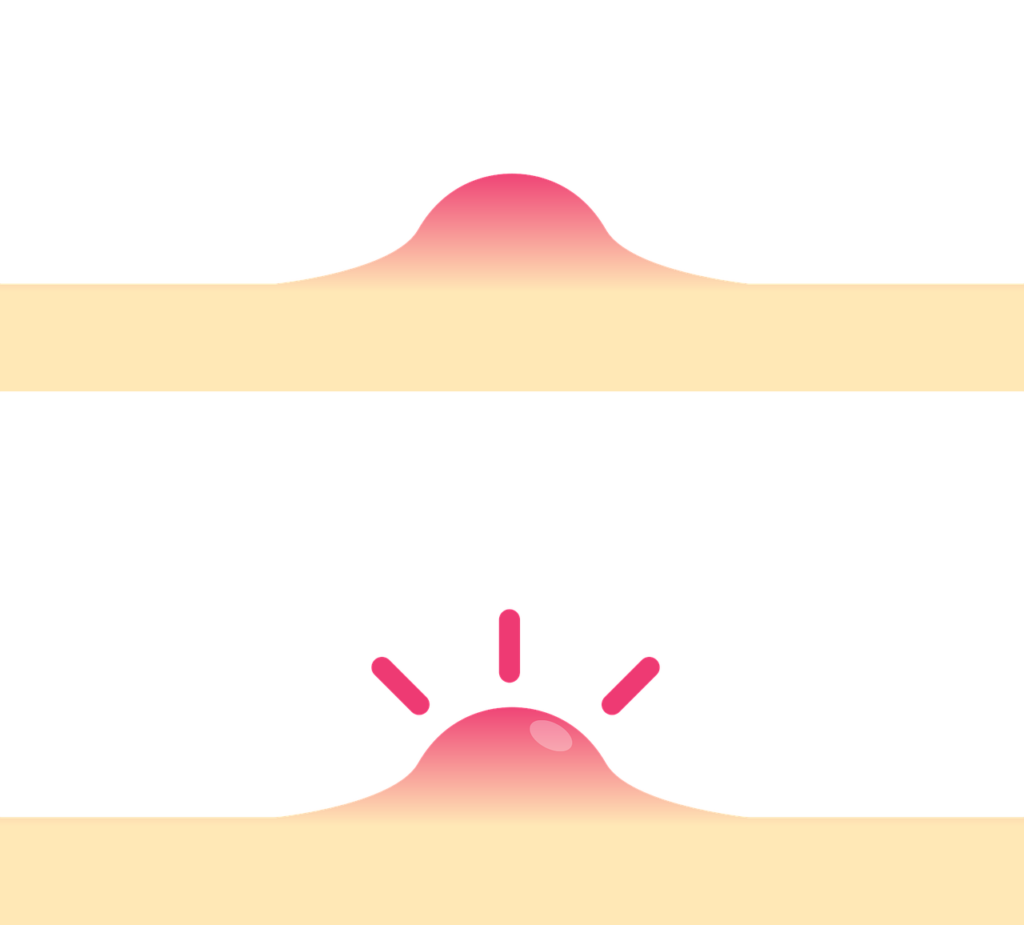Summary
What is a pilonidal cyst?
Pilonidal cyst: excision of lesions
A large, very painful abscess at the bottom of the spine is usually a sign of superinfection of a pilonidal cyst.
Although not severe, the situation requires rapid treatment and generally leads to surgery, which is the only solution to avoid recurrence. Let’s take a look at the issue together.
What is a pilonidal cyst?
Description of this type of cyst
The pilonidal cyst, also called pilonidal sinus, is a lump that develops in the lower back, gluteal groove, and subcutaneous region. It contains hairs associated with their sebaceous glands, which produce sebum. This fluid drains out through a small orifice, visible on the skin’s surface.
The pilonidal cyst goes unnoticed for a long time until it becomes superinfected. The abscess that forms can be excruciating and can reach a significant size. It sometimes ruptures towards the deep layers of the skin.
Good to know: several pilonidal cysts can cohabit in the same person and communicate.
Pilonidal cyst: two possible origins
Two distinct phenomena may explain the appearance of these cysts:
- the cyst would be present from birth, formed during the development of the fetus by a fold of skin that includes a pouch;
- the cyst would form following repeated rubbing of the area concerned when sitting down, which would lead to the inclusion of hairs in the skin.
Note: pilonidal cysts are more frequently found in young men.
Painful but benign condition
Pilonidal cysts are not uncommon. About 20,000 people a year undergo surgery for this reason.
It does not have severe consequences on the patients’ health but must be treated urgently in case of superinfection.
Pilonidal cyst: excision of lesions
The treatment of a pilonidal cyst involves surgery, which is performed under general anesthesia. Antibiotic treatment is administered to the patient to avoid infections:
The surgeon injects a blue dye into the cyst(s) to visualize them and thus be able to remove all the lumps. If the sac wall remains in place, the cyst may reform.
All of the affected tissue is carefully removed. The wound is not sewn up to avoid trapping the leaking pus, which would lead to the formation of a new abscess.
A wick is placed in the wound and changed daily by a nurse. The time needed for complete healing depends on the size of the wound, but it usually takes many weeks, up to ten.
After complete excision of the cyst, recurrence is rare, occurring in less than 5% of cases.
Good to know: to avoid removing too much tissue, it is sometimes preferable not to operate when the abscess is too large. The surgeon first makes a simple incision to empty the spot of its contents; the actual operation is performed a few days later.
Read more:
– 7 Foods that Damage Your Kidneys;
– Melatonin Is Not A Sleeping Pill;
– Experience Eating 2 Bananas Daily and See What Happens;
– 11 Best Foods to Prevent Hair Loss;
– Eat these 7 Anti-aging Foods;
– 4 Reasons Why You Should Eat Olives;
– 8 Foods To Avoid If You Have Joint Pain;
– WARNING! 5 Reasons Why You Should Stop Eating French Fries Regularly!
– Drink This Before Bedtime and Lose Weight Overnight!
– Why and When to See a Podiatrist;
– A Guide To Bodybuilding Nutrition;
– 7 Tips for More Energy in the Morning;
– Not Hungry in the Morning: Should We Force Ourselves to Eat?
– Flax Seed: The Partner for Your Health and Slimming Needs.


